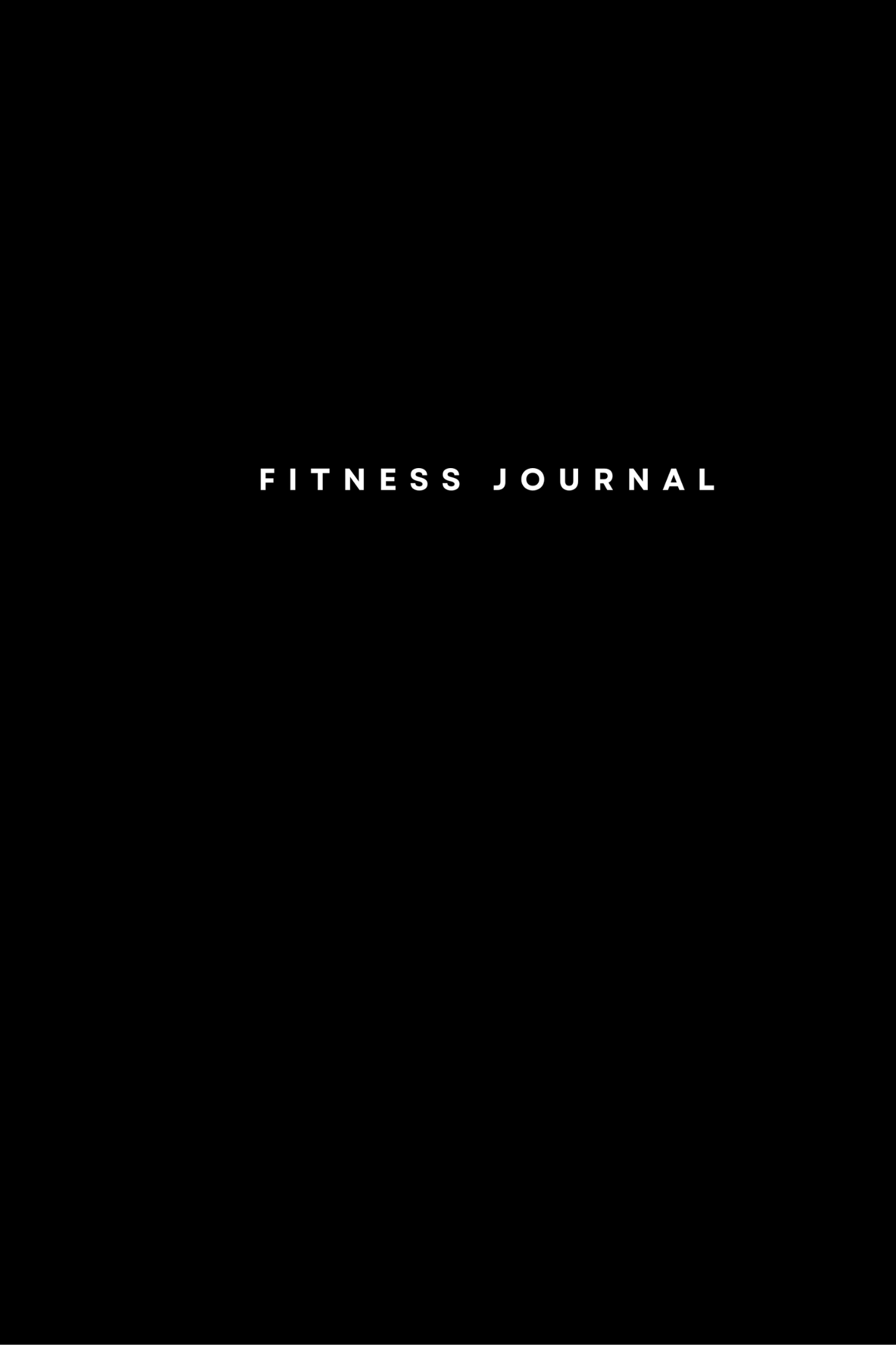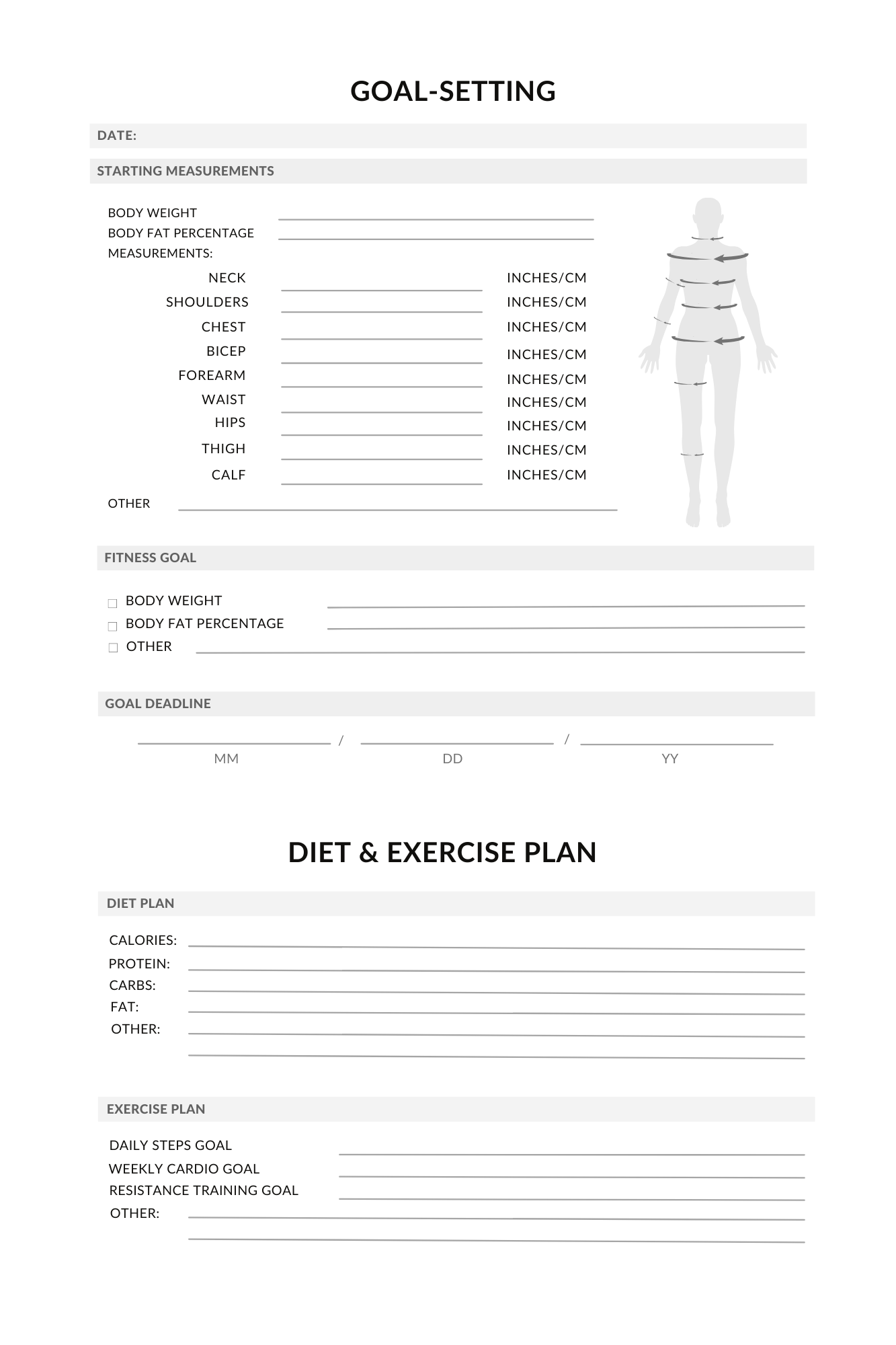How to Journal for Fat Loss
Journaling is a powerful tool that can help you stay on track in your fat loss journey.
Research shows that people who keep a food log and journal while working towards fat loss are more likely to reach their goals.[1, 2, 3, 4]
One way that journaling can help you reach your fat loss goals is that it allows you to hold yourself accountable.
Writing down what you eat, how much you exercise, and how you feel can help you stay on track and keep your goals in mind. It's easy to lose sight of your goals when you're busy or stressed, but keeping a daily journaling routine can help you stay focused and motivated.
Journaling can also help you become more aware of your habits and patterns.
By recording what you eat, you can see where you may be overindulging or where you can make healthier choices. You can also track your exercise routine to see if you're being consistent and challenging yourself enough. This awareness can help you make changes to your lifestyle that will support your fat loss goals.
When you use your journal to reflect on your progress, you can identify what is working and what needs improvement. This also gives you a chance to celebrate your victories and milestones—which can help boost your confidence and motivation (which ultimately keeps you consistent in the long run).
How to Use Journaling for Fat Loss
Step 1: Goal-Setting
The first step in effective fat loss journaling is setting your goals.
Before setting a goal for your fat loss, create a record of your current measurements (at least the ones that you’ll be using to track your progress).
Fat loss is usually measured by body weight (e.g., “I’d like to lose 15 pounds”), dress size (“I’d like to fit in a size 6”), belly circumference (37in for men or 31.5in for women), or body fat percentage.
Body fat percentage requires special equipment like a smart scale or hydrostatic testing, whereas the other measurements (body weight, dress size, belly circumference) can easily be taken at home with a scale or measuring tape.
Once you have a record of your starting measurements, set a goal for your fat loss. Make sure to choose a goal that is SMART, which stands for:
Specific
Measurable
Achievable
Relevant
Time-constricted
Keep in mind that fat loss progress is never linear, and the rate at which your body burns fat is highly individual and variable.
However, most experts usually recommend setting a rough goal of losing between 0.5 and 2 pounds (0.2 and 0.9 kg) per week (with a calorie deficit of between 250 and 1,000 calories respectively).
If you’re tracking belly circumference, you can expect to lose about 1 inch (2.5 cm) for every 4 pounds (1.8 kg) lost.
If you’re using one of my Fitness Journals (available on Amazon), use the Goal-Setting sheet at the beginning of the book to take your measurements and set your fat loss goal.
Step 2: Create a Plan
Once you have set your fat loss goal, then you need to create a plan of action. Your plan should include how you intend to eat and exercise to achieve your fat loss goal.
You’ll need to keep your body in a caloric deficit so that it taps into its fat stores. This means you’ll eat below your maintenance level of calories (or Total Daily Expenditure TDEE).
Keep in mind that each pound (0.45 kg) of fat is roughly 3500 calories:
to lose 0.5 pounds (0.2 kg) per week, you’ll need to eat 250 calories below maintenance every day
to lose 1 pound (0.45 kg) per week, you’ll need to eat 500 calories below maintenance every day
to lose 2 pounds (0.9 kg) per week, you’ll need to eat 1000 calories below maintenance every day
Use a food journal or calorie-tracking app like MyFitnessPal to track what you eat and drink every day to reach your daily calorie goal. You can also create a meal plan (click here to download my free meal planning worksheets) or follow a ready-made meal plan.
In addition to staying within your daily calorie goal, make sure to also plan on eating plenty of protein. Experts recommend between 0.7 and 1 gram of protein per pound (0.45 kg) of body weight per day.
To learn more about how to eat for fat loss, check out my Healthy Diet Makeover program.
Make sure to also write down your exercise plan.
The American Heart Association recommends getting between 150 and 300 minutes total of moderate-intensity exercise per week (or between 75 and 150 minutes of high-intensity or mixed high- and moderate-intensity). You can split your exercise minutes up however you like (e.g., 5 days a week for 30-60 minutes).
Make sure to also include some resistance training to keep your muscles and bones strong 2-4 times per week in your exercise plan. Check out my resistance training programs on the ABC Trainerize app.
Step 3: Track Your Progress
After you have set your goal and created your plan, you can use journaling to track your progress. You can do this by:
tracking what you eat (either in a food journal or an app like MyFitnessPal)
tracking your workouts (either in a fitness journal or on an app like ABC Trainerize)
taking your measurements periodically (every day or each week)
completing a daily or weekly reflection to assess your progress and plan any changes that might be needed (my fitness journals include both workout tracking and a weekly reflection and goal-setting)
References
[1] Stuckey H. L., Boan J., Kraschnewski J. L., Miller-Day M., Lehman E. B., Sciamanna C. N. Using positive deviance for determining successful weight-control practices. Qualitative Health Research. 2011;21(4):563–579. doi: 10.1177/1049732310386623
[2] Hollis J. F., Gullion C. M., Stevens V. J., et al. Weight loss during the intensive intervention phase of the weight-loss maintenance trial. American Journal of Preventive Medicine. 2008;35(2):118–126. doi: 10.1016/j.amepre.2008.04.013
[3] Boutelle K. N., Kirschenbaum D. S. Further support for consistent self-monitoring as a vital component of successful weight control. Obesity Research. 1998;6(3):219–224
[4] Abildso C. G., Zizzi S., Gilleland D., Thomas J., Bonner D. A mixed methods evaluation of a 12-week insurance-sponsored weight management program incorporating cognitive-behavioral counseling. Journal of Mixed Methods Research. 2010;4(4):278–294. doi: 10.1177/1558689810376949
About the Author
Hey there! 👋 I’m certified personal trainer and health coach Jayd Harrison.
I help people burn fat, clean up their diets, and build muscle with my online coaching programs and other online content. Check out my Coaching Corner podcast, videos on Youtube, join me live on Twitch, and follow me on social media.










